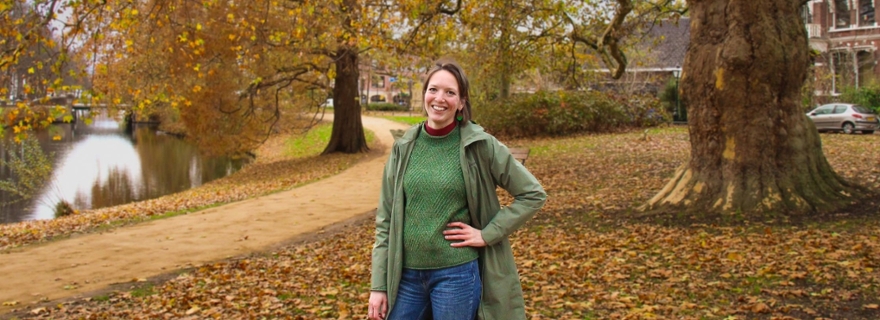
Fenna IJtsma delved into four centuries of Leiden greenery: 'Leiden people have always sought out greenery'
Over the past year, historian Fenna IJtsma delved into 'four centuries of historical greenery'. As part of the Heritage Deal, with input from biologists at Naturalis and others, she looked for inspiration and examples from the past to contribute to a future climate-proof city centre.
A special feature of the Heritage Deal is that historical city planning plays an emphatic role in solutions for the future. IJtsma therefore researched more than four hundred years of Leiden planting. 'I focused on major changes, ranging from strong population growth to post-World War II reconstruction,' she says. 'For each period, I mapped the most important developments for green space and related them to four different values that people attributed to green space: utility, economy, aesthetics and use.'
Use and enjoyment
In all the periods IJtsma studied, Leiden people appeared to seek out green spaces. 'You can also see this in periods of population growth, when areas of greenery are under pressure,' she says. 'The outer edge of the Singel, for instance, became a popular walking route for the upper classes in the mid-seventeenth century. The trees once planted there to defend the city were now sought out for recreation and relaxation.'
Whereas greenery for the upper classes is often about health and aesthetics, poorer Leiden residents more often had a utilitarian relationship with greenery. IJtsma: 'They needed bleaching fields, for example, to bleach their laundry so they could thus earn an income. At the same time, you see that the city council was aware of the economic value of green spaces. They invested, for instance, in parks and building villas with gardens to keep the upper classes within the city, which in turn generated income tax.'
Emphasis on sustainability
Beauty and practical use often go hand in hand in green history. The trees along the canals attracted tourists for their unique aesthetics, but were also used in the timber industry. Fully grown trees were uprooted, and a small tree was then put back. 'The biologists I worked with were really enthusiastic about that,' IJtsma says. 'All those different growth stages of the trees are good for biodiversity.'
This brings her to the last value of green she distinguishes in her report: ecological. 'Since the end of the 20th century, we have been increasingly concerned with the question of what habitat nature itself creates,' she says. 'We consider biodiversity increasingly important for the survival of our own ecosystem. Nowadays, for example, we are also looking at how we can remove CO2 from the air by planting trees.'
Research in practice
IJtsma's research is now with the urban landscape architect, along with a toolbox of more than 30 greening measures that emerged from Naturalis' research. Together, they form the basis for the natural landscaping of Leiden city centre planned over the next ten years.
